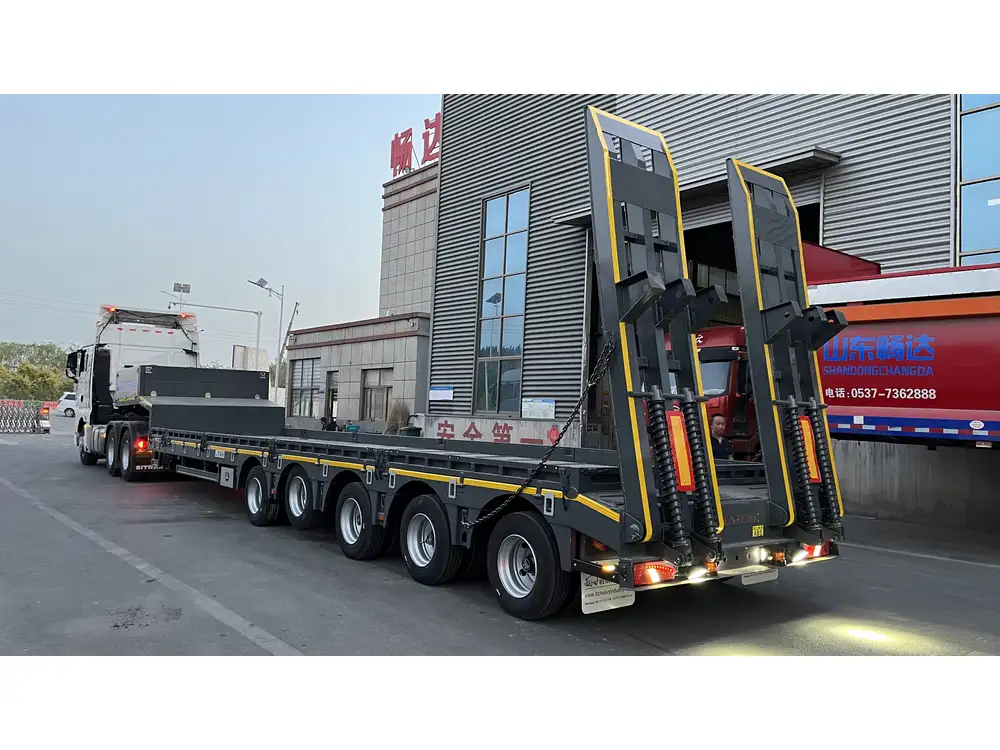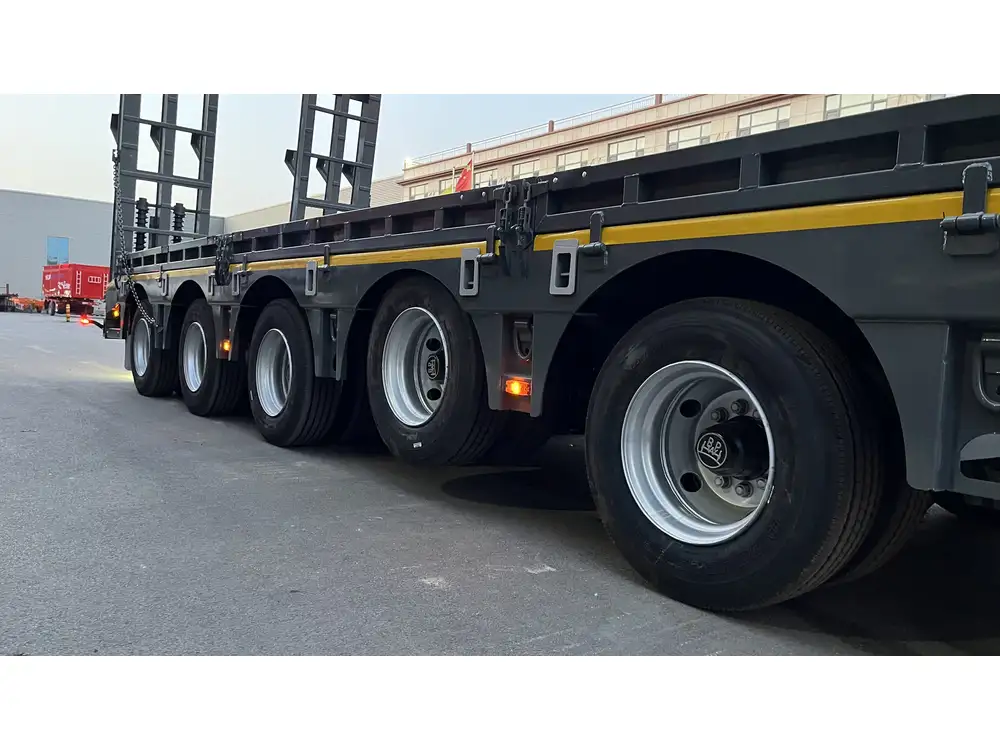When it comes to flatbed trailers, selecting the right tire size is crucial for both safety and efficiency. This article delves deeply into the various aspects of choosing the appropriate tire size for a 14 flatbed trailer, addressing a range of considerations you may face.
Understanding Tire Specifications
Before we explore the optimal tire size, it’s vital to understand the specifications found in tire sizes. Tire size is typically denoted by a series of numbers and letters, such as “ST205/75R14.”
| Component | Description |
|---|---|
| ST | Stands for “Special Trailer,” indicating the tire’s suitability for trailer use. |
| 205 | The tire’s width in millimeters. |
| 75 | The aspect ratio – the height of the sidewall as a percentage of the width. |
| R | Refers to the radial construction of the tire. |
| 14 | Rim diameter in inches. |
Industry Standard Tire Sizes for a 14 Flatbed Trailer
For a standard 14 flatbed trailer, common tire sizes include:
- ST205/75R14
- ST225/75R14
- ST145/80D12 (less common but sometimes used)

Tire Size Comparison Table
| Tire Size | Width (mm) | Aspect Ratio (%) | Rim Diameter (inches) | Load Range |
|---|---|---|---|---|
| ST205/75R14 | 205 | 75 | 14 | C |
| ST225/75R14 | 225 | 75 | 14 | D |
| ST145/80D12 | 145 | 80 | 12 | B |
Load Capacities
Different tire sizes have different load capacities, typically indicated by the Load Range classification (e.g., C, D).
- ST205/75R14 Load Range C: Approximately 1,760 lbs per tire at 50 psi.
- ST225/75R14 Load Range D: Approximately 2,540 lbs per tire at 65 psi.
When hauling different loads, understanding these capacities is essential.
When to Choose a Specific Tire Size
Load Requirements: If you regularly carry heavy cargo, opting for a larger tire size like ST225/75R14 would provide additional support.
Type of Terrain: Consider the terrains you will traverse. Larger tires often offer better traction on rough roads.
Manufacturer Recommendations: Always consult your flatbed trailer’s owner’s manual for tire size recommendations. Choosing a size not approved by the manufacturer can compromise safety.

Finding the Right Replacement Tire
When selecting a replacement tire, various factors come into play. Below is a checklist to guide your decision-making process:
- Tread Pattern: A more aggressive tread pattern can improve traction but may reduce efficiency on paved roads.
- Tire Construction: Radial tires typically provide better grip and longevity compared to bias tires.
- Seasonality: Depending on your operation’s seasonal demands, specific tire features can make a significant difference. All-season tires can be versatile, while specialized ones such as snow-rated can enhance performance in adverse conditions.
The Importance of Proper Inflation
Maintaining the correct tire pressure is vital. Under-inflated tires can lead to heat build-up and blowouts, while over-inflated tires reduce traction and increase wear. Here are some points regarding inflation:
| Inflation Level | Impact |
|---|---|
| Under-inflated tires | Increases rolling resistance, leading to heat build-up. |
| Over-inflated tires | Reduces contact area, resulting in swift tire wear. |
Recommended Inflation Pressure for 14 Flatbed Trailer Tires
Here is a general guideline for maintaining proper inflation:
| Tire Size | Recommended Pressure (psi) |
|---|---|
| ST205/75R14 | 50 |
| ST225/75R14 | 65 |

Regular Inspection and Maintenance Practices
Routine tire maintenance plays a pivotal role in enhancing safety and prolonging tire life. Here are crucial practices:
Visual Inspections: Regularly examine for cracks, bulges, or foreign objects embedded in the tread.
Tread Depth Measurement: A tread depth gauge can help you monitor wear. Minimum tread depth should be no less than 2/32 of an inch.
Rotation Schedule: Just like standard vehicles, flatbed trailer tires should be rotated periodically to ensure even wear.
Tread Wear Indicators
Recognizing tread wear indicators can save you from unexpected mishaps. Here’s how to identify them:
| Indicator | Condition | Suggested Action |
|---|---|---|
| Flat Spots | Uneven wear patterns | Check alignment |
| Bumps/Bulges | Potential internal damage | Replace immediately |
| Cracking | Rubber wear over time | Consider replacement |
FAQs about Tire Sizes for Flatbed Trailers

What happens if I use the wrong tire size?
Using an incorrect tire size can lead to handling issues, reduced load capacities, and increased tire wear, ultimately compromising safety.
Can I mix different tire sizes on my trailer?
It’s not advisable to mix different tire sizes as this can lead to uneven wear and stability issues during towing.
How can I extend the life of my trailer tires?
Proper inflation, routine maintenance, timely rotations, and adhering to load limits can significantly prolong tire life.

Conclusion
Choosing the correct tire size for your 14 flatbed trailer is an intricate but crucial process. It involves considering load capacities, terrain, and proper maintenance practices. Regular inspections and tire pressure monitoring are essential for safety and longevity. By following this guide, you can make informed decisions that will keep your flatbed trailer running smoothly and efficiently.
For additional inquiries regarding tire sizes, specifications, or consultation about your specific flatbed model, do not hesitate to contact industry professionals or your local tire specialist. Your safety and operational efficiency depend on it.



